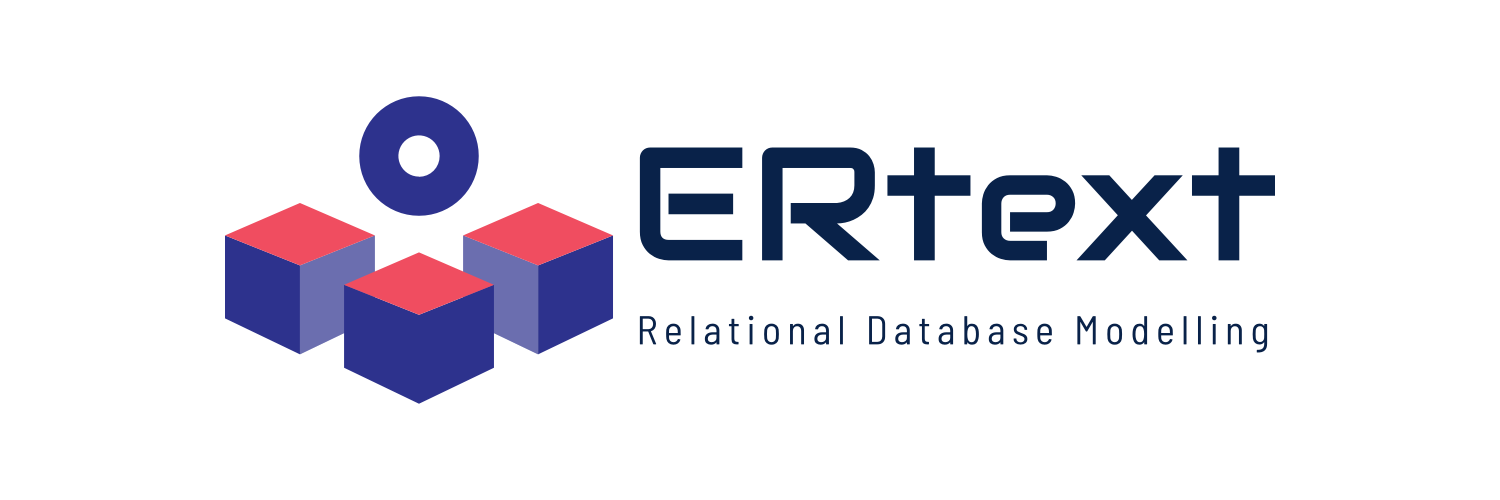-
Notifications
You must be signed in to change notification settings - Fork 3
Grammar Definition
The definition of our DSL using a variation of the EBNF metasyntax notation is shown below.
ERModel:
('Generate' targetGenerator= ('LogicalSchema' | 'PostgreSQL' | 'MySQL' | 'Diagram' | 'All') ';')?
domain=Domain ';'
('Entities' '{') entities+=Entity+ ('}' ';')
('Relationships' '{') relations+=Relation* ('}' ';');
Domain:
'Domain' name=ID;
Attribute:
name=ID type=DataType (isKey?='isIdentifier')?;
Entity:
name=ID ('is' generalization=('total/disjoint' | 'total/overlapped' | 'partial/disjoint' | 'partial/overlapped') is=[Entity])?
('{' attributes+=Attribute
(',' attributes+=Attribute)* '}')?;
Relation:
(name=ID) ('[' leftEnding=RelationSideLeft
'relates'
rightEnding=RelationSideRight ']')
('{' attributes+=Attribute
(',' attributes+=Attribute)* '}')* occurrence=('@generateOccurrenceDiagram')?;
RelationSideRight:
cardinality=('(0:1)' | '(1:1)' | '(0:N)' | '(1:N)')
target=[Entity] | target=[Relation];
RelationSideLeft:
target=[Entity] | target=[Relation]
cardinality=('(0:1)' | '(1:1)' | '(0:N)' | '(1:N)') ;
enum DataType:
INT='int' | DOUBLE='double' |
MONEY='money' | STRING='string' |
BOOLEAN='boolean' | DATETIME='datetime' |
BLOB='file';The grammar command specifies the name of the DSL, while the with statement declares an inheritance from another language. In the case of the proposed grammar, a standard Xtext grammar called Terminals is used, which provides some predefined rules, such as the ID rule for identifiers. The generate command is the statement that produces the AST of the language.
The first rule, called the input rule, is ERModel and defines the general structure of the language. Words and symbols enclosed in double or single quotes indicate reserved words (keywords). For example, the Entities object must be preceded by "Entities{". This object represents a kind of container, which is indicated by the += assignment op- erator. It is an object that can contain other objects, in this case, one or more Entity (entities). It is established that each DSL file must also be composed of a Domain (domain) and zero or more Relation (relations). In addition, a file optionally contains a Generate command, which indicates which file(s) should be generated.
For a better understanding, it should be clear that the multiplicity is indicated by * (zero or many), + (one or many), or ? (zero or one). By not placing any of these operators, the grammar implicitly expects only one occurrence. Regarding assignments, when only one = is specified, it means that the left object expects only one record. So, for += then zero is expected, one or more occurrences, and so forth.
The Domain object precedes by a reserved word with the same name, followed by an identifier. The entity is defined by the word Entity and a specific identifier name for this object. Setting an inheritance is optional via the is keyword. When specifying an inheritance, it is necessary to indicate the type among the four (4) possible ones to then point to the inherited class, e.g. EntityB is total/disjoint EntityA. After defining the name, a curly bracket opens a snippet to specify the entity attributes. An entity must contain at least one attribute, but it does not need to be an identifier due to the possible existence of weak entities.
Composed rules are only performed due to the possibility of grouping expressions using parentheses, in addition to the possibility of using other rules through crossreferences. The square brackets in the is attribute of the Entity rule are meant to indicate that we aim to use only the name attribute that identifies the referenced object. If this detail is not specified then the language compiler would interpret that it is neces- sary to apply the whole Entity rule again, that is, the mandatory definition of another entity would be started, thus entering in a loop. Entity attributes are defined by a name, inheriting the ID rule from Terminals, as well as by a data type. Optionally an attribute can have the keyword isIdentifier to symbolize primary keys.
A relationship is defined, already inside the body of the Relationships block, with a mandatory declaration of its identification. Then square brackets are opened and we must specify two elements that represent the sides of the relationship. These elements are the RelationSideLeft and RelationSideRight. These objects must be separated by the relates expression. Both elements have two attributes, one indicating cardinality and the other referring to the related object (an entity or other relationship). A relationship can still have attributes declared between curly braces, and for these cases, the Attribute rule is applied.
Attribute types are contained in an enumerated list called DataType, on the left is the representation within the Ecore model and on the right is the keyword available to the user. The conditional symbol | means the logical operator OR and serves to separate each <key> = <value> definition as an option within the list.
Main developer: Jonnathan Riquelmo
Project members: Maicon Bernardino (Advisor) and Fábio Basso (Co-advisor)
Research group: Laboratory of Empirical Studies in Software Engineering (LESSE)™
Federal University of Pampa (UNIPAMPA) - Campus Alegrete, RS
